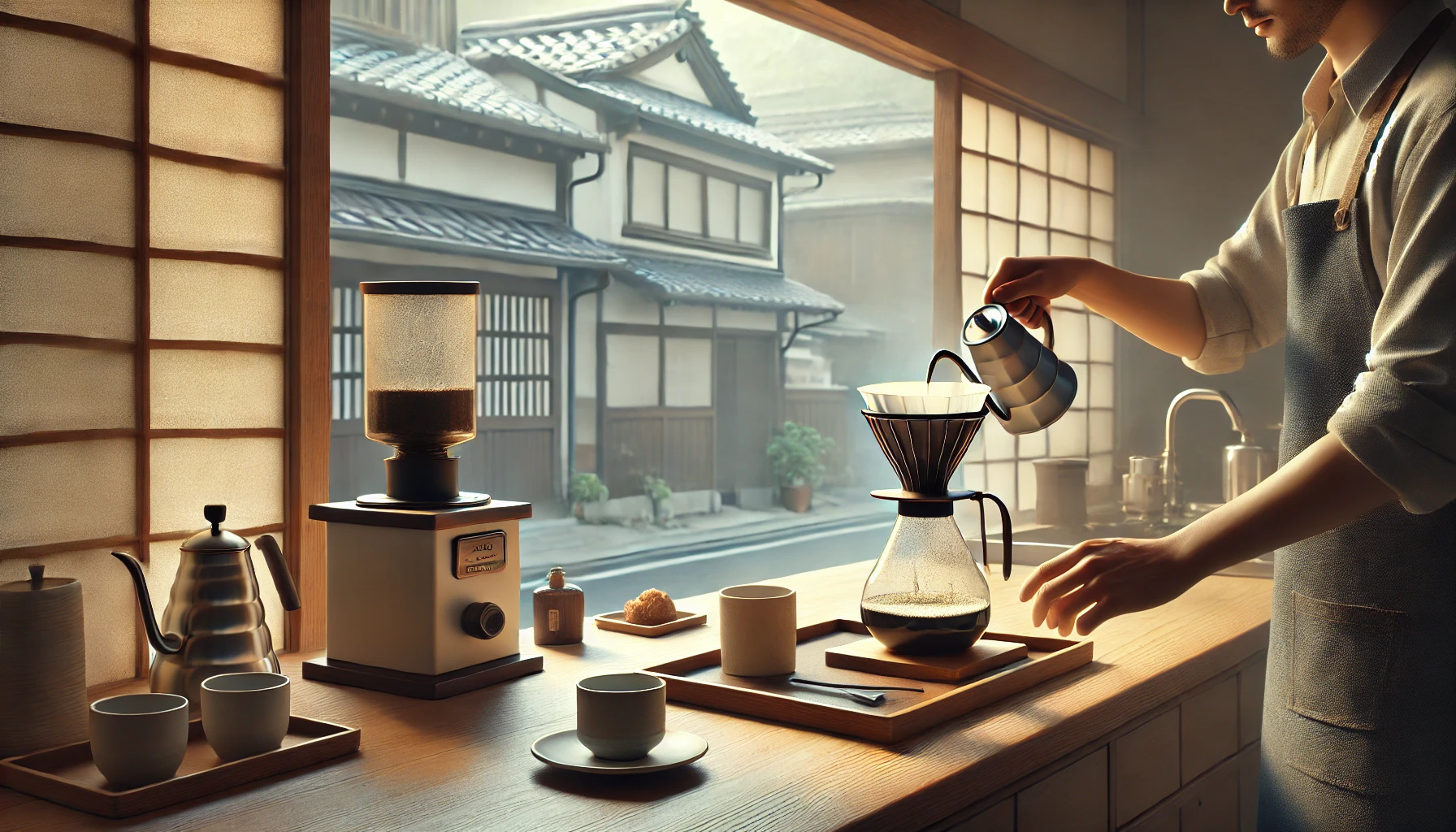When most people think of Japanese beverages, tea likely comes to mind first. But over the past century, Japan has developed one of the most unique and respected coffee cultures in the world—blending precision, aesthetic beauty, and a passion for craftsmanship that rivals even traditional tea ceremonies.
In this article, we explore the roots, rituals, and innovations of Japanese coffee culture, and how it continues to influence global coffee trends.
A Brief History of Coffee in Japan
Coffee was first introduced to Japan by Dutch traders in the 17th century, but it didn’t become widely consumed until the late 1800s, during the Meiji era, as the country began modernizing and opening up to Western influence.
By the 20th century, kissaten (Japanese-style coffee shops) began to appear—elegant, quiet spaces where patrons could enjoy brewed coffee alongside toast, cake, or curry rice. These spaces emphasized hospitality and thoughtful presentation, helping coffee gain popularity as a refined, contemplative experience.
Today, Japan boasts a diverse coffee scene, from heritage cafés to third-wave roasters and vending machine brews.
The Kissaten Experience
A kissaten is more than a coffee shop—it’s a space for slow living, introspection, and tradition. These cafés typically feature:
- Dark wood interiors and vintage decor
- Classical music or jazz playing softly
- Carefully brewed siphon or pour-over coffee
- Handwritten menus and curated desserts
Here, coffee is not rushed. It’s crafted, served with elegance, and meant to be savored quietly.
Some kissaten have been in operation for over 50 years and are considered cultural landmarks in cities like Tokyo, Kyoto, and Osaka.
Pour-Over and Precision
Japan is globally known for its pour-over coffee techniques. The country has refined the art of brewing to a level of almost meditative practice.
What Sets It Apart?
- Use of equipment like Hario V60, Kalita Wave, and Origami drippers
- Emphasis on exact measurements, timing, and temperature control
- Attention to water quality, grind size, and blooming process
- Elegant, clean presentation—often served in fine porcelain cups
The process isn’t just about taste—it’s about ritual. Brewing coffee becomes a moment of mindfulness and intention.
Siphon Brewing: Theatrical and Scientific
Another hallmark of Japanese coffee is the siphon method, where coffee is brewed using vapor pressure and vacuum suction in glass chambers.
- Visually stunning—like a science experiment meets fine dining
- Popular in kissaten and upscale cafés
- Produces a clean, aromatic, tea-like coffee
- Emphasizes clarity and layered flavor
This brewing method showcases Japan’s blend of scientific precision and artistry.
Convenience and Innovation
Japan is also known for making coffee accessible and convenient in innovative ways:
- Canned coffee is available everywhere—from vending machines to convenience stores. Brands like Boss, Georgia, and Suntory offer everything from black to milk-based and flavored options.
- Coffee vending machines are climate-controlled to serve drinks hot or cold on demand.
- Drip bag coffee (single-serve pour-overs) are sold in beautiful packaging and make great travel companions or gifts.
- Latte art cafés, robot baristas, and automated brewing bars are increasingly popular in major cities.
This duality—deep tradition alongside high-tech modernity—defines Japanese coffee culture.
Specialty Coffee and Third Wave Influence
In recent years, Japan has become a major player in the specialty coffee scene, with roasters and baristas earning global recognition.
Notable Japanese roasters include:
- Onibus Coffee (Tokyo)
- Kurasu (Kyoto)
- Lattest (Tokyo)
- Maruyama Coffee (Nagano)
These roasters focus on traceable, high-quality beans, often from Ethiopia, Kenya, and Latin America, roasted with balance and elegance in mind.
In Japanese specialty cafés, expect:
- Meticulous brewing with minimal distractions
- Friendly but reserved baristas
- Stylish, minimalist interiors
- Coffee flights and tasting menus
Coffee and Japanese Aesthetics
Japanese coffee culture is steeped in aesthetic principles like:
- Wabi-sabi (beauty in imperfection and transience)
- Shibui (understated elegance)
- Mono no aware (awareness of the fleeting nature of things)
From the drip of the kettle to the shape of the ceramic cup, every detail is intentional.
Even takeaway coffee from a simple corner café might come in a beautifully designed cup or be wrapped in washi paper.
Final Thoughts: Coffee as Art, Ritual, and Everyday Joy
Japanese coffee culture is a rare blend of depth and discipline, tradition and technology, mindfulness and innovation. Whether you’re sitting silently in a century-old kissaten or ordering a hot canned brew from a Tokyo vending machine, the coffee is always treated with care.
It’s not just a drink—it’s a daily ritual, a quiet celebration of craft, and a reflection of Japan’s ability to find elegance in even the most ordinary moments.
